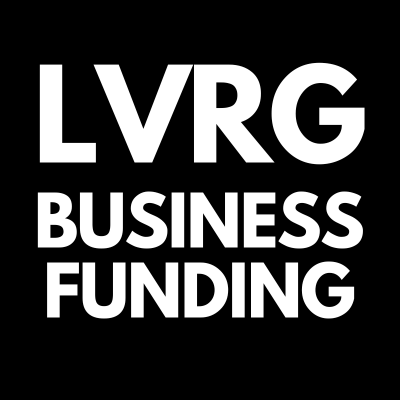Cash Flow: The Pulse of Your Business
Cash flow is an indispensable aspect of every business, representing the movement of money in and out of the company. It serves as the pulse of your business, indicating the health and vitality of your operations. However, cash flow encompasses more than just the monetary aspect; it reflects the overall dynamics and sustainability of your business.
Understanding Cash Flow
Cash flow involves the inflow and outflow of funds within a business. The inflow includes revenue from sales, investments, and financing, while the outflow comprises expenses such as payroll, rent, utilities, and loan payments. Monitoring these movements is crucial in managing the day-to-day financial obligations, making critical investment decisions, and ensuring the long-term solvency of the business.
The Significance of Positive Cash Flow
A positive cash flow indicates that the business is generating more money than it is spending, providing a healthy financial foundation. It enables the business to cover operational expenses, invest in growth opportunities, repay debts, and build reserves for contingencies. A positive cash flow instills confidence in owners, investors, creditors, and employees, showcasing the business's ability to thrive and weather economic uncertainties.
The Implications of Negative Cash Flow
Conversely, negative cash flow can signal potential challenges. It may indicate that the business is struggling to meet its financial obligations, relying on credit to sustain operations, or experiencing a downturn in revenue. Persistent negative cash flow can lead to financial distress, hampering the business's growth prospects and creditworthiness.
Managing Cash Flow Effectively
To ensure a healthy cash flow, businesses must implement proactive strategies. This includes diligently tracking cash inflows and outflows, maintaining a cash reserve for unforeseen expenses, negotiating favorable payment terms with suppliers, and optimizing the timing of expenses and revenue recognition. Additionally, businesses can explore financing options from LVRG to bridge short-term gaps in cash flow.
The Broader Perspective of Cash Flow
Beyond its financial implications, cash flow reflects the efficiency and effectiveness of a business's operations. For instance, a consistently positive cash flow may indicate streamlined processes, effective cost management, and strong customer relationships. On the other hand, persistent negative cash flow may prompt a reassessment of business strategies, cost structures, and revenue streams.
Cash flow serves as the pulse of your business, offering critical insights into its financial viability and operational prowess. By understanding the nuances of cash flow and actively managing it, businesses can establish a solid foundation for sustainable growth, financial stability, and resilience in the ever-evolving marketplace. Thus, viewing cash flow as more than just money coming in and going out allows businesses to harness its full potential as a barometer of their overall performance and outlook.
The Importance of Cash Flow: Beyond the Numbers
Cash flow is often seen as a simple concept - money coming in and going out. However, it's much more than that. Cash flow is the pulse of your business, indicating its health and vitality. Let’s go a bit further to explore why cash flow is critical for businesses, the factors that influence it, and strategies to manage it effectively.
Understanding Cash Flow
Cash flow refers to the movement of money in and out of a business. It's a fundamental indicator of a company's financial health and sustainability. Essentially, positive cash flow means more money is flowing into the business than flowing out, while negative cash flow indicates the opposite.
The Impact of Cash Flow on Businesses
Positive cash flow is essential for several reasons:
1. Meeting Obligations
Sufficient cash flow enables a business to meet its financial obligations, such as paying employees, suppliers, and creditors. Failing to do so can result in damaged relationships and legal repercussions.
2. Funding Growth
Healthy cash flow provides the resources needed to invest in expansion, innovation, and other growth opportunities. It allows businesses to seize new opportunities and navigate through challenging economic times.
3. Survival and Sustainability
Without positive cash flow, even the most promising businesses can struggle to survive. Regular cash flow deficits can lead to insolvency and bankruptcy, regardless of a company's profitability on paper.
Factors Affecting Cash Flow
Cash flow can be influenced by various internal and external factors, including:
1. Sales and Revenue
The primary source of cash inflow for most businesses is sales and revenue. Any factors affecting sales, such as market demand, competition, or economic conditions, can impact cash flow.
2. Operating Expenses
Controlling operating expenses is crucial for maintaining positive cash flow. Managing costs, optimizing processes, and negotiating favorable terms with suppliers are all essential for healthy cash flow management.
3. Accounts Receivable and Payable
The timing of receivables and payables directly affects cash flow. Delayed payments from customers or extended payment terms to suppliers can create cash flow gaps that need to be managed effectively.
4. Economic Conditions
External factors, such as interest rates, inflation, and overall economic stability, can significantly impact a business's cash flow. Adapting to changing economic conditions is essential for maintaining healthy cash flow.
Effective Cash Flow Management Strategies
To ensure strong and consistent cash flow, businesses can implement the following strategies:
1. Accurate Cash Flow Forecasting
By projecting future cash inflows and outflows, businesses can anticipate potential shortfalls and surpluses. This allows for proactive management of cash flow and better decision-making.
2. Efficient Accounts Receivable Management
Streamlining the invoicing process, offering incentives for early payments, and actively following up on overdue invoices can help improve cash flow from receivables.
3. Tight Control Over Expenses
Regularly reviewing and optimizing expenses, negotiating better terms with vendors, and identifying areas for cost savings can contribute to improved cash flow.
4. Access to External Funding
In some cases, businesses may require external funding to bridge cash flow gaps. Funding options from LVRG such as SBA loans, cash flow financing, working capital loans, business lines of credit, merchant cash advances, or invoice financing can provide the necessary liquidity.
5. Inventory Management
Balancing inventory levels to avoid overstocking or stockouts is crucial for cash flow management. Efficient inventory management can prevent tying up excess capital in unsold goods.
Cash flow is indeed more than just money coming in and going out. It's the lifeblood of a business, sustaining its operations, fueling growth, and ensuring its survival. By understanding the significance of cash flow, monitoring key factors that influence it, and implementing effective cash flow management strategies, businesses can maintain a healthy financial pulse and thrive even in challenging business environments.
Cash Flow vs. Working Capital: Understanding the Differences
When it comes to managing the financial operations of a business, two crucial terms that often come into play are cash flow and working capital. While these two concepts are closely related and share commonalities, they represent distinct aspects of a company's financial health and stability. In this comprehensive analysis, I’ll delve into the nuances of cash flow and working capital, delineating their differences and elucidating their individual significance in the realm of business finance.
Cash Flow: The Lifeblood of Business Operations
Cash flow is one of the foundational pillars of financial management for any business entity. At its essence, cash flow represents the movement of cash in and out of a company over a specific period of time. It serves as a critical indicator of a company's liquidity and financial health, as it delineates the inflows and outflows of actual cash within a given timeframe.
Components of Cash Flow
The cash flow of a business can be categorized into three primary components:
1. Operating Cash Flow: This component encompasses the cash generated or used in the core operational activities of the business, such as revenue from sales, payments to suppliers, and operating expenses.
2. Investing Cash Flow: The investing cash flow reflects the cash flow from investment activities, including the purchase or sale of assets such as property, equipment, or securities.
3. Financing Cash Flow: This component encapsulates the cash flow from financing activities, such as the issuance or repayment of debt, and the issuance or repurchase of company stock.
Importance of Cash Flow
The vitality of cash flow lies in its role as a barometer of a company's financial viability. Positive cash flow is indicative of a healthy and sustainable business model, signifying that a company is generating more cash than it is spending. Conversely, negative cash flow can be a red flag, suggesting potential liquidity issues and an inability to meet financial obligations. Additionally, strong cash flow not only ensures the day-to-day operational stability of a business but also provides the foundation for strategic initiatives, growth investments, and weathering unforeseen financial challenges.
Working Capital: The Engine of Operational Efficiency
In contrast to cash flow, working capital pertains to the operational efficiency and short-term financial stability of a business. Working capital represents the capital available for day-to-day operations and is a measure of a company's ability to meet its short-term obligations. It serves as a fundamental indicator of a company's liquidity and operational efficiency, highlighting the balance between current assets and current liabilities.
Components of Working Capital
Working capital is calculated as the difference between a company's current assets and its current liabilities. Current assets encompass cash, accounts receivable, inventory, and other assets that are expected to be converted into cash within one year, whereas current liabilities include accounts payable, short-term debt, and other obligations due within one year.
Importance of Working Capital
Sufficient working capital is imperative for smooth operational functioning and maintaining a healthy cash flow. It enables a company to cover its short-term expenses, such as inventory purchases, payroll, and other operational costs, without relying extensively on external financing. Additionally, a robust working capital position provides a buffer for unforeseen fluctuations in cash flow, market volatility, and unexpected expenses, thus fostering resilience and stability within the business.
Key Distinctions Between Cash Flow and Working Capital
While cash flow and working capital share the common objective of assessing a company's financial health and liquidity, there exist notable distinctions between these two financial parameters.
1. Time Horizon: Cash flow, by its nature, reflects the movement of cash over a specific period of time, typically on a monthly, quarterly, or annual basis. In contrast, working capital focuses on the present and immediate future, emphasizing the adequacy of resources to cover short-term liabilities and operational expenses.
2. Scope of Analysis: Cash flow encompasses the broader financial activities of a company, including not only operational transactions but also investment and financing activities. Working capital, on the other hand, concentrates specifically on the availability of resources for day-to-day operations and short-term financial obligations.
3. Long-Term vs. Short-Term Perspective: Cash flow provides insights into a company's long-term financial sustainability, taking into account the inflows and outflows of cash over extended periods. Working capital, however, centers on the short-term liquidity and operational efficiency, focusing on the immediate financial needs and capacity of the business.
Synergistic Relationship and Interdependence
Despite their differences, cash flow and working capital are interconnected components of a company's financial framework. A healthy and sustainable cash flow is imperative for maintaining strong working capital, as positive cash flow ensures the availability of resources to support day-to-day operations and meet short-term financial obligations. Conversely, a robust working capital position contributes to the stability of cash flow by mitigating liquidity risks and enabling the smooth execution of operational activities.
In conclusion, maintaining a healthy cash flow is paramount for the success of small businesses. From meeting day-to-day operational expenses to seizing growth opportunities, a positive cash flow provides the essential foundation for sustainability and expansion. Smart cash flow management involves proactive financial planning, diligent monitoring, and strategic decision-making. By adopting a proactive approach to cash flow management, small business owners can better navigate through inevitable financial challenges and position their ventures for long-term success.
By Charles M. Barr, CEO of LVRG Business Funding





